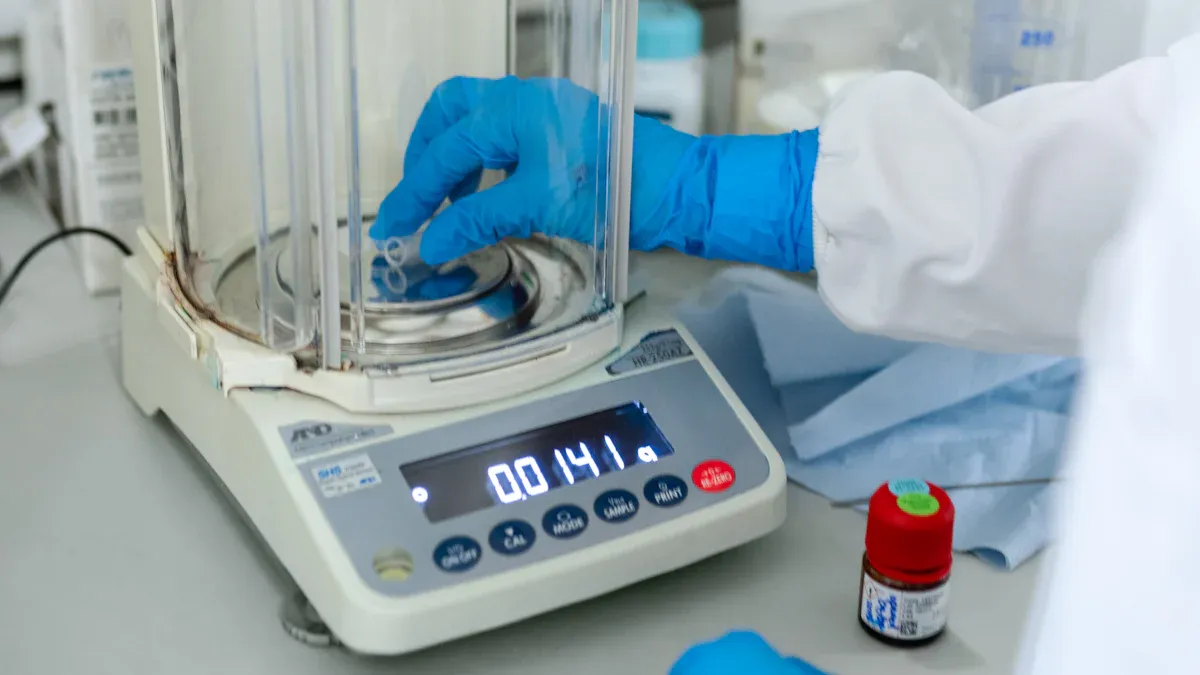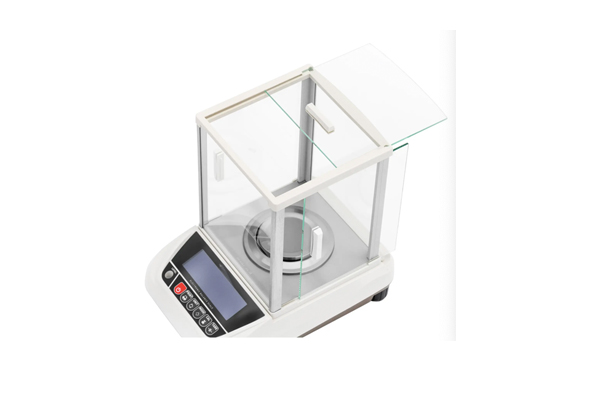Accurate measurements are the foundation of reliable scientific results, and Precision Balances play a crucial role in achieving them. These advanced instruments ensure exact weight readings essential for research, quality control, and pharmaceutical applications. By minimizing errors and improving consistency, they support the integrity of laboratory work. Understanding why precision balances are vital helps professionals maintain high standards in every analytical process.

Precision Balances in the Laboratory
What Are Precision Balances
Precision balances are specialized instruments designed for high-precision measurements in laboratory settings. They help scientists measure small differences in mass with great accuracy. These devices support a wide range of laboratory tasks, from preparing solutions to weighing chemicals for experiments.
Precision balances differ from standard scales because they offer much higher readability and precision. They can detect even tiny changes in weight, which is essential for experiments that require exact measurements. Many laboratories use precision balances when they need results that are both reliable and repeatable.
Key Features
Precision balances include several important features that make them valuable in laboratory work. Most models have digital displays that show measurements clearly, which improves readability and reduces mistakes. Many precision balances also have built-in calibration systems to ensure ongoing accuracy.
Some key features include:
- High capacity for weighing larger samples compared to analytical balances
- Quick response times for efficient workflows
- Resistance to environmental changes, such as temperature or air currents
Laboratories often choose precision balances because they combine precision with ease of use. These instruments support a variety of applications, including quality control, research, and educational experiments. A laboratory balance with these features helps maintain consistent results and supports scientific progress.
Benefits of Precision Balances
Accuracy and Sensitivity
Precision balances deliver a high degree of accuracy in laboratory settings. These instruments can detect very small changes in mass, which is important for high-precision measurements. Scientists trust these balances to provide reliable data for every measurement.
The sensitivity of precision balances allows users to measure even the tiniest differences in samples. This level of sensitivity supports experiments that require exact amounts of chemicals or materials. High accuracy and sensitivity help prevent errors and ensure consistent results.
Efficiency in Laboratory Work
Precision balances help laboratories work faster and more efficiently. Their quick response times mean that scientists do not have to wait long for results. This speed supports busy labs where time matters.
Digital displays on precision electronic balances make it easy to read results. Clear readability reduces mistakes and saves time during experiments. Efficient workflows lead to better productivity in research and testing.
Versatility and Capacity
Precision balances offer greater capacity than an analytical balance. They can handle larger samples while still providing precise results. This versatility makes them useful for many types of laboratory work.
A laboratory balance with high capacity supports both small and large-scale experiments. Scientists can use one device for different tasks, which saves space and money. Precision balances also resist environmental changes, such as drafts or temperature shifts, better than analytical models.
| Feature | Precision Balances | Analytical Balances |
|---|---|---|
| Capacity | High | Low |
| Sensitivity | High | Very High |
| Environmental Resistance | Good | Moderate |
Reducing Resource Waste
Precision balances help reduce waste in the laboratory. Accurate measurements mean that scientists use only the amount of material needed. This careful use of resources lowers costs and supports sustainable practices.
When laboratories avoid overuse of chemicals or samples, they protect both budgets and the environment. Precision in weighing helps prevent mistakes that could lead to repeating experiments. Reliable measurements save time, money, and valuable materials.
Applications of Precision Balances
Chemical and Biological Experiments
Precision balances support many chemical and biological experiments. Scientists use them to measure reagents and samples with high accuracy. This accuracy helps ensure that reactions occur as expected and that results remain reliable.
Researchers often prepare solutions and mixtures using precision balances. These balances help maintain consistency between experiments. Accurate measurements also reduce the risk of contamination.
Pharmaceutical and Food Industry
Precision balances play a key role in the pharmaceutical and food industries. Workers use them to weigh ingredients for medicines and food products. Accurate weighing ensures that products meet safety and quality standards.
Pharmaceutical labs rely on precision balances for compounding and quality control. Food scientists use them to test nutritional content and portion sizes. These applications help protect consumer health.
Precision balances help:
- Maintain product consistency
- Meet regulatory requirements
- Reduce waste
Environmental Science
Environmental scientists use precision balances to analyze soil, water, and air samples. These measurements help track pollution and study environmental changes. Accurate data supports research on climate and ecosystem health.
Field and laboratory work both benefit from precision balances. Scientists can measure small changes in sample mass. This helps detect pollutants and monitor environmental trends.
Materials Science
Materials scientists depend on precision balances to study metals, polymers, and composites. They measure samples before and after experiments to track changes in mass. This information helps them understand material properties.
Precision balances also assist in quality control for manufacturing. Consistent measurements ensure that products meet design standards. Reliable data supports innovation in new materials.
Maintenance and Best Practices

Controlling Environmental Factors
Laboratories must control environmental factors to keep measurements accurate. Air currents, vibrations, and temperature changes can affect a sensitive weighing mechanism. Placing the balance on a stable surface and away from drafts helps protect the measurement range.
Regular Calibration
Regular calibration ensures that a precision balance provides reliable results. Laboratories should follow a set schedule for calibration to detect any drift or errors. Proper calibration helps the balance measure small incremental differences with confidence.
Proper Handling
Users should handle balances with care to avoid damage. Always use clean tools and avoid touching the weighing pan with bare hands. This practice prevents contamination and keeps the balance in good condition.
- Handle samples gently
- Avoid overloading the balance
- Clean the weighing area after each use
Record-Keeping and Traceability
Accurate record-keeping supports traceability in laboratory work. Scientists should log each measurement and note any maintenance or calibration performed. Good records help track performance and identify issues quickly.
Choosing a Laboratory Balance
Selection Factors
Selecting the right laboratory balance requires careful thought. Scientists must consider the sample size they plan to measure. A balance with a higher capacity works better for larger samples, while smaller samples may need more sensitivity.
Required accuracy plays a major role in the decision. Some experiments demand very precise measurements, so a laboratory may need an analytical balance. Analytical balances offer higher sensitivity but usually have lower capacity.
The environment also affects balance performance. Vibrations, drafts, and temperature changes can impact results. Laboratories should choose a balance that resists these factors or use protective equipment like draft shields.
A simple table can help compare important features:
|
Factor |
Precision Balance |
Analytical Balance |
|---|---|---|
| Capacity | High | Low |
| Sensitivity | Good | Very High |
| Environmental Resistance | Good | Moderate |
Maintenance Tips
Proper maintenance keeps a laboratory balance accurate and reliable. Regular calibration ensures the balance provides correct results. Laboratories should follow the manufacturer’s schedule for calibration and use certified weights.
Clean the weighing pan after each use to prevent contamination. Handle all parts gently and avoid overloading the balance. Store the balance in a stable, clean area to protect it from dust and damage.
Record all maintenance and calibration activities in a logbook. Good records help track performance and support quality control. Consistent care extends the life of the balance and maintains measurement accuracy.
Conclusion
Precision Balances are essential tools for ensuring accuracy, consistency, and efficiency in modern laboratory work. Their sensitivity and reliability support high-quality results across scientific research, industry, and environmental studies. By selecting the right balance, maintaining proper calibration, and controlling environmental factors, laboratories can achieve dependable measurements that uphold scientific integrity. Investing in precision balances ultimately safeguards data accuracy and drives progress in every analytical discipline.
